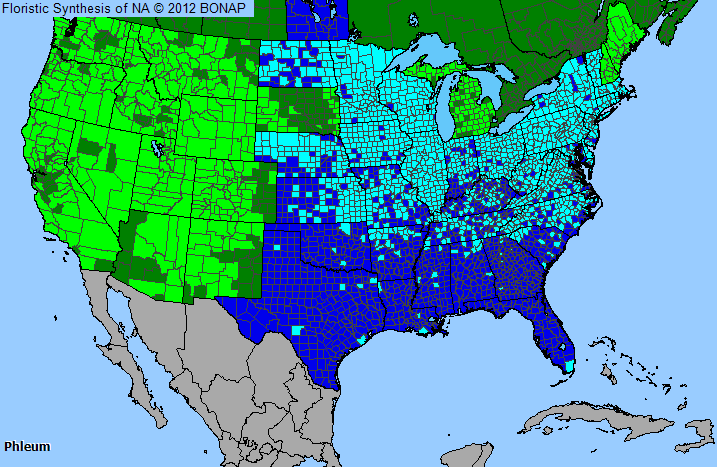
Plant Allergy Overview
Allergenicity
Severe
Pollen Season
Spring to Fall
Type
Grass
Sub-Type
Perennial
Allergy Information
Phleum is among the worst of the grass genera that cause pollinosis in early summer. This grass has been reported to be only second to orchard grass (Dactylis) in allergenicity among grasses.
Genus Details
Timothy (Phleum pratense) is a common forage crop and pasture grass in the U.S. It is native to Europe and northern Asia and grows well in cool humid regions of North America. Timothy is a short-lived perennial that grows 2 to 4 feet tall with flat leaves and a dense cylindrical, spike-like flower cluster or seed head. Flowering occurs during June and July. Pollen shed can be avoided by cutting the first hay crop early to prevent flowering. Early crops are smaller but have higher nutritional value for animals. The major allergenic component in timothy has been reported to cross-react with pollen types of other grass species. Allergens in these other grasses may be a more severe problem for some people. Fortunately, this grass has not become widely established in urban areas.
Pollen Description
Grains are spheroidal to ovoidal, sometimes elliptical. The exine is thin and the surface is granular to finely reticuloid. Poaceae apertures are 1-porate, with the pores usually circular to ovoidal.
Grains are 22-122 micrometers in diameter.
Genus Distribution

The shaded areas on the map indicates where the genus has been observed in the United States.
 - Native, observed in a county
- Native, observed in a county  - Introduced, observed in a county
- Introduced, observed in a county  - Rarely observed
- Rarely observedSpecies in Timothy Genus
Allergens & Plants Search
Enter a full or partial species name to find more information on one of over 1,200 potentially allergenic plants.
For example, you can find chenopods searching on "cheno"

